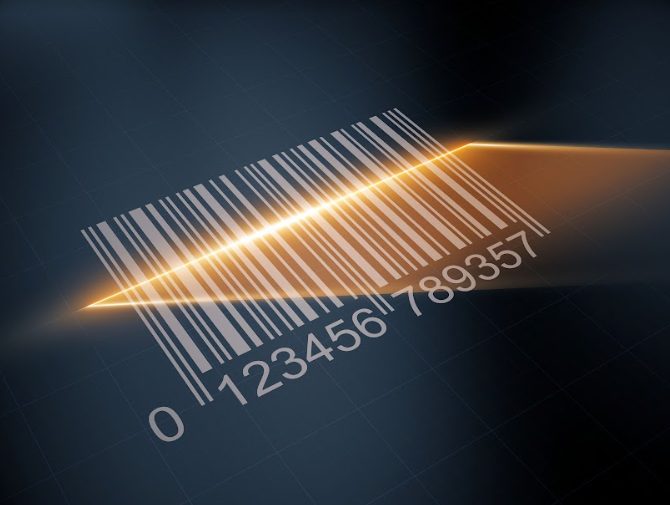7 Ways Your Business Benefits From Using Bar Codes
14 February 2023
7 Mins Read

toc impalement
Bar codes play a vital role in various companies by helping with product tracking and identification, streamlining data entry, and improving efficiency and output.
They offer a cost-effective means of managing inventory and daily tasks. Bar codes have become a common aspect of modern life, used extensively across multiple industries such as retail, manufacturing, and logistics.
The bar code is a series of lines and spaces of varying widths that a bar code reader or scanner can scan. When scanned, the bar code is converted into a digital signal that can be processed by a computer, allowing the stored data to be easily retrieved and analyzed.
This data can include product information, such as a product ID, price, or expiration date, or other relevant information, such as a date or location.
In industries like manufacturing, transportation, and warehousing, using durable bar codes on common harsh environment labels helps ensure the longevity and accuracy of the stored data.
Types Of Bar Codes
Bar codes are symbols used to encrypt data in a machine-readable way. 1D (or linear) and 2D (or matrix) bar codes are the two primary varieties. There are particular uses and applications for each bar code in various sectors.
One-Dimensional (1D) Bar Codes
The most common type of bar code is the one-dimensional (1D) bar code, which consists of a series of vertical bars of varying widths and spacings. The widths and spacings of the bars represent binary data, with each bar representing either a 0 or a 1. The data represented by the bar code is determined by the specific symbology used, such as the UPC (Universal Product Code) or EAN (European Article Number) symbology commonly used in retail.
Two-Dimensional (2D) Bar Codes
Two-dimensional (2D) bar codes, such as QR (quick response) codes, are becoming increasingly popular. Contrary to 1D bar codes, which can only encode a small amount of data, 2D bar codes provide a significantly wider range of data-encoding capabilities, including the ability to encode the text, photos, website links, and even whole documents. A smartphone or other device with a camera is used to scan 2D bar codes, read the code and display the data.
Benefits Of Using Bar Codes
Bar codes are a standard and efficient method of tracking and identifying products. There are several ways in which using bar codes can benefit your business:
1. Improved Inventory Management
With bar codes, businesses can easily track the movement of their products and monitor inventory levels. This helps to ensure that stock is always at the right level, reducing the risk of overstocking or stock shortages. In addition, bar codes can help businesses to avoid stock discrepancies and losses due to theft or misplacement.
2. Increased Accuracy
Bar code scanning eliminates the need for manual data entry, reducing the risk of human error. This results in more accurate information about inventory levels, product information, and other essential data. Accurate data helps businesses make informed decisions, improve operations, and avoid costly mistakes.
3. Faster Checkout
Scanning bar codes allows cashiers to speed up transaction processing, reducing wait times and enhancing the customer experience. This benefits customers and businesses by enabling faster service, increasing sales, and higher customer satisfaction.
4. Better Customer Service
Staff members can respond to client inquiries and give accurate information thanks to bar codes’ rapid and simple access to product information. As a result, customers are more inclined to recommend and remain loyal to businesses that offer excellent customer service.
5. Enhanced Supply Chain Management
Organizations can use bar codes to track products as they move through the supply chain, providing them with useful information about delivery timings and product movements.
This contributes to better logistics and operations, which boosts productivity and lowers costs. Businesses may make informed judgments and act promptly in response to changes in demand or supply by having real-time information on the location and status of their products.
6. Reduced Costs
Organizations can automate numerous processes by implementing a bar code system, cutting labor expenses and increasing productivity. This can result in cost reductions and higher earnings, enabling businesses to reinvest in expansion and improvement.
7. Increased Sales
Bar codes can boost sales and customer loyalty by enhancing customer satisfaction, drastically reducing wait times, and boosting accuracy and efficiency. Businesses may provide customers with a better shopping experience by adopting bar codes, encouraging repeat business, and boosting profitability.
Potential Challenges Of Implementing Bar Code System
Bar code systems can be challenging to implement, even though they provide many advantages for organizations. The following are some of the most typical challenges that companies may run into when putting a barcode system in place:
A. Transitioning From Manual Processes To A Bar Code System
Implementing a bar code system sometimes requires businesses to replace existing manual procedures with new, automated processes. This can be a difficult process that takes a lot of time and requires proper planning.
Businesses need to consider the price of new gear and software, how long it will take to train personnel, and how it will affect current systems and procedures.
B. Ensuring Employee Buy-In
All employees must understand how the system works and be trained to use it effectively for bar code systems to be effective. This can be a challenge, especially for businesses with many employees.
To ensure employee buy-in, businesses must provide comprehensive training programs that educate employees about the benefits of bar code systems and how to use them. It is also essential to involve employees in implementing the system and provide ongoing support and training.
C. Selecting The Right Hardware And Software
Determining which bar code hardware and software meet your company’s needs might be difficult, given the variety of options available. Businesses must consider the sort of bar code they require, the number of transactions they must handle, and the hardware and software’s compatibility with existing systems when choosing the appropriate hardware and software.
D. Integrating The Bar Code System With Existing Systems
Implementing a bar code system with existing systems, such as inventory management and point-of-sale systems, can be challenging. It’s recommended that businesses work with a consultant who specializes in bar code systems to ensure a seamless integration by selecting the most suitable strategy.
E. Ensuring Accuracy And Consistency
Only reliable and consistent data can ensure the effectiveness of bar code systems. Ensuring that data is captured accurately and consistently is a critical challenge for businesses implementing bar code systems.
Businesses must engage in employee training programs and ensure that the bar code system is connected with current systems in order to ensure accuracy and consistency in data collecting. Additionally, organizations should put in place quality control procedures that verify data accuracy on a regular basis and spot and fix any problems.
By recognizing the potential hurdles and taking measures to resolve them, businesses can successfully implement a bar code system and experience the benefits of improved functioning, decreased costs, and boosted revenue.
The Process Of Implementing Bar Code System
Implementing a bar code system can seem complex and overwhelming, but it can be straightforward and efficient with the right planning and implementation. The following steps outline the key elements involved in implementing a bar code system:
1. Determine Your Bar Code Requirements
Before selecting a barcode symbology, hardware, and software, it’s essential to understand your business needs and requirements. This includes considering factors such as the type of products you need to track, the amount of information you need to encode, and the size of the bar codes you need to use.
2. Select A Bar Code Symbology
There are several different types of bar code symbology available, including 1D and 2D bar codes, and each type has its advantages and disadvantages. It’s important to select a symbology that best fits your business requirements.
For example, 1D bar codes are simple and efficient but can only encode limited amounts of information. On the other hand, 2D bar codes can encode much more information, but they are more complex and require specialized hardware and software to read them.
3. Choose The Right Hardware
Selecting the right hardware is crucial for implementing a successful bar code system. This includes choosing barcode scanners, printers, and labels that are compatible with your chosen symbology and that can meet your specific business needs.
4. Choose The Right Software
You must have barcode software to manage and encode data in your bar code system effectively. Choosing software that is user-friendly, compatible with your hardware, and provides the needed features for your company is crucial. For example, if you have a high volume of data to encode, you may require bar code software with advanced data encoding functions.
5. Plan For Implementation
Implementing a bar code system, whether 1D or 2D like QR codes, requires planning and preparation to smoothly transition from manual processes to a bar code system. This includes creating a timeline, allocating resources, and ensuring that all employees are trained to use the system effectively.
6. Test And Monitor The System
It’s crucial to test your bar code system after installation to make sure everything is running smoothly. This entails confirming that bar codes can be read precisely, that data is encoded correctly, and that the system gives the required information. To ensure the system continues to fulfill your business needs, monitoring it and making any necessary improvements is crucial.
By following these steps, you can ensure that you select the right bar code symbology, hardware, and software and that your bar code system is implemented successfully. A well-planned and executed bar code system can significantly benefit your business, including improved efficiency, accuracy, and customer satisfaction.
Conclusion
Bar codes have become integral to modern commerce and revolutionized businesses’ operations.
From tracking products from the manufacturer to the consumer to improving accuracy and visibility in the supply chain, bar codes have proven to be an indispensable tool in supply chain management or the business industry in general.
As technology continues to evolve, bar codes will continue to play a critical role in the growth and success of businesses in the years to come.
Read Also:


















Comments Are Closed For This Article